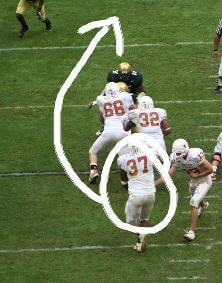US Military Drowning in Drone Data

Share
In the future the face of the military may be a robotic one. For now, it's all up to human eyes and brains to analyze the mountains of data that the US armed forces collect every day. Unmanned aerial vehicles (UAVs) like the Predator and Reaper are constantly flying through Iraqi and Afghani airspace, searching for roadside bombs, armed combatants, and unknown threats. According to the NY Times, the video collected by these drones has risen sharply in the last few years, with an increase of 300% from 2007 to 2008 alone. The amount of footage from 2008 would take 24 years to watch by a single human that never slept or blinked. Luckily, there are hundreds of young soldiers, mostly in the Air Force, who view each video as it comes in. Still, the increasing amounts of drone data lead me to wonder: how long will humans be used to review these videos?
Reaper drones are increasingly taking over for the earlier Predator series. These newer UAVs have 10 cameras aiming in different directions. By 2011, the Reaper will be fitted with 30 cameras, and may one day be further augmented to handle up to 65 views at once. Commanders in the field and officers in analysis centers rely on these machines to collect on-the-ground intelligence that discovers threates and saves lives. Soldiers want more of this data, not less, and that's going to produce an ever increasing amount of video that has to be reviewed.
Right now the Air Force and other military branches (including intelligence gatherers like the CIA) are doing a great job processing that information as it comes in. But they are not necessarily doing so well in sharing that data. Small groups of analysts watch the video, highlighting important information to relayed back out to the field. According to the NY Times, modified forms of chat rooms are the predominate means by which this intelligence gets routed to the field commanders who need it. New web networks are in development to help analysts share important information between military branches and units. The Air Force will even be looking to use a form of telestrator (like the ones used by football announcers on TV) to circle and highlight important info in the clips sent out.
But even the Air Force knows the value of nonhuman analysis. They've spent $500 million on a computer system that automatically alerts users to important drone video with appropriate highlight clips, text, and graphics. Right now, top officials do not think that computers have the reasoning skills to take over for humans for decision making. Considering the growing sophistication of video analysis software like Vitamin D, or analysis systems like Samurai, I think it's only a matter of time before computer decision making is the only option fast and precise enough to handle the tide of drone data.
Be Part of the Future
Sign up to receive top stories about groundbreaking technologies and visionary thinkers from SingularityHub.


Along with AI analysis in the base, we're going to see easy drone control in the field. MIT's iPhone controlled drone, the Eye Drive bot, iRobot's Ember, even the AR Drone from Parrot - these are all quality surveillance robots with command systems that are intentionally intuitive and simple. Soldiers will be able to point to where they want the drone to go, and it will. The Air Force is already getting behind that point and go mentality. According to the Times , they're looking to adapt the telestrator technology so that you can simply circle the object you want the drone to follow and report on.
In short, while everyone is nervous about what happens when humans are no longer the ones with their finger on the trigger, computers and robots are already poised to handle some surveillance functions largely on their own. That trend is going to continue. Humans won't be removed from the decision making process, but artificial intelligence will filter everything down to what's most important. And, with enough AI, that 24 years worth of footage can be reviewed for patterns of enemy behavior and provide long term analysis for how terrorists are planning their attacks.
Looking even further down the line, robots are going to become more responsible for taking human life. Already we have armed, automated turrets in Iraq. Reaper and Predator drones don't just take video, they can deliver an extremely effected explosive payload. In the race to develop a stronger, faster, more accurate military we're moving towards a less human one. That's scary, but considering how much we want that military to accomplish it seems inevitable. Let's just make sure that while the robots are watching the videos, someone is watching the robots.
[photo credit: Wiki Commons, USAF Photographic Archive]
Related Articles

These Robots Are the Size of Single Cells and Cost Just a Penny Apiece

In Wild Experiment, Surgeon Uses Robot to Remove Blood Clot in Brain 4,000 Miles Away

A Squishy New Robotic ‘Eye’ Automatically Focuses Like Our Own
What we’re reading

